This article was co-authored by Mohiba Tareen, MD. Mohiba Tareen is a board certified Dermatologist and the founder of Tareen Dermatology located in Roseville, Maplewood and Faribault, Minnesota. Dr. Tareen completed medical school at the University of Michigan in Ann Arbor, where she was inducted into the prestigious Alpha Omega Alpha honor society. While a dermatology resident at Columbia University in New York City, she won the Conrad Stritzler award of the New York Dermatologic Society and was published in The New England Journal of Medicine. Dr. Tareen then completed a procedural fellowship which focused on dermatologic surgery, laser, and cosmetic dermatology.
There are 12 references cited in this article, which can be found at the bottom of the page.
This article has been viewed 73,577 times.
Burn scars are the elevated, fibrous tissue left behind after you’ve received a serious first- or second-degree burn. If the scar tissue is relatively light, remove it with a moisturizing cream or silicone gel sheets. For scars left by more serious burns, try removing them through massage therapy or, for very deep or large scars, through surgery. In the case of more serious scarring (e.g., from third-degree burns), you won’t be able to fully remove the scar from your body, but you may be able to lighten the scar’s appearance.
Steps
Applying Topical Treatments
-
1Use an over-the-counter moisturizing cream if the scar itches. Burn scars are often itchy. If you scratch them with your fingernails, the scar may tear open or bleed. Instead, apply an OTC moisturizer to the scar. Apply the cream 2–3 times a day by gently massaging it into the scarred area. Select a fragrance-free moisturizer to avoid agitating the burn scar and, for the same reason. Avoid medicated anti-itch creams.[1]
- Moisturizers are great to use while the burn scar is still fresh. They’ll help the scar recede and prevent it from growing large and unsightly. However, do wait until any blistering has healed before applying a moisturizer to the scar.
-
2Put an emollient cream on the scar to protect it from damage. Once any blisters on the skin have healed, the scar won't be at risk of or breaking open. Wait another 3-4 days until the scar tissue stops feeling tender. At this point, apply an emollient cream at least once per day. Emollient creams will moisturize the scar and help it reabsorb into the surrounding skin. They’ll also reduce redness and protect the scar tissue from being damaged.[2]
- Emollient creams are heavier and thicker than moisturizers, although not as heavy as an ointment.
- Purchase an OTC emollient cream at any large drugstore or pharmacy.
Advertisement -
3Keep the burned tissue out of the sun. The ultraviolet rays produced by the sun can darken the color of your scar, making it much more visible. To keep the scar from darkening, use clothing and sunscreen to protect the scar from sunlight. Practical steps you can take include:[3]
- Wearing a large-brimmed hat if the burn is on your face or neck.
- Wearing loose clothing that covers the scarring if it’s on your body.
- Applying sunscreen (at least 30 SPF) to the burn if you can’t cover it with clothing.
-
4Apply silicone gel sheets to second-degree burn scars. Silicone gel sheets hold medical silicone gel against the burn scar, which has been proven to help lighten and remove scar tissue. The sheets are adhesive, and will stay against your skin once you press them firmly into place. Purchase silicone gel sheets at any pharmacy or drugstore. Since they aren’t medicated, you won’t need a prescription. For best effects, keep the gel sheet on for 4 hours at a time to start, then you can wear it longer, up to 24 hours a day, but be sure to remove the sheet regularly and keep the skin beneath clean.[4] [5]
- In order for the silicone gel to work, it’s important that you keep the burn scar and surrounding skin clean. Wash your burn scar with soap and water before you apply the silicone gel sheet. If you don’t, you’ll trap irritants and bacteria under the gel sheet and risk infecting the scar.
- Do not apply silicone gel sheets to an open burn blister.
Expert Warning: Silicone gels work best on new burn scars that are still red and painful. If the scar has already started to heal and turn brown or white, silicone gel sheets might not be as effective.
Removing Scars with Massages and Lasers
-
1Meet with a doctor or burn therapist to discuss your options. If you've tried to get rid of burn scars with OTC creams and silicone gel sheets but not had any luck, you need to meet with a medical professional. Start by talking with your general practitioner, who may refer you to a dermatologist or burn specialist.[6]
- These professionals can help you figure out the best course of action for your particular burn scars.
-
2Receive weekly massages to loosen and shrink the scar. Receiving a massage from a professional massage artist will stretch and loosen the burned skin. This will make the scar tissue more flexible and less sensitive, and will also allow the scar to lighten in color.[7] Ideally, receiving massages over a long period of time (e.g., 6 months) will lighten the scar tissue enough that it’s no longer visible.[8]
- If you’ve seen a burn-scar therapist, ask them to recommend a massage artist who has worked with burn victims before.
-
3Perform massages on yourself at home if your doctor allows. Massage treatments can be expensive, and often the massage techniques used are fairly straightforward. If it’s alright with your doctor or burn specialist, once you’ve received 3–5 professional massages, begin massaging yourself at home. Common techniques include stretching, rolling, and kneading the burned area(s). You can learn these techniques by watching your massage therapist perform them on your burn scars.[9]
- If the burn scar is in an area that you cannot reach, ask a friend or family member to massage you.
-
4Ask about laser treatments to remove large, dark scarring. Large scars that comprise hairless, shiny, raised skin can be tough to remove. One of the common methods of lightening them is through laser treatments. The application of lasers may remove the scars’ dark red color and soften the scar tissue, although it may take 1-2 weeks before you begin to see results. Laser treatments can also decrease pain and itching caused by the scar.[10]
- Talk with your doctor or burn-scar therapist to find a doctor who can perform the laser scar removal. The therapist may recommend that you receive laser treatments in addition to—or instead of—massages.
- While combining laser treatments with massage won't necessarily help you get rid of your scar tissue any faster, the added massages will help loosen the scar tissue in ways that laser treatments won't.
Getting Rid of Scars with Injections and Surgery
-
1Consider steroid injections to reduce raised, thick burn scars. Thick, dense scars that won’t shrink with massage or laser therapy can often be treated with steroid injections. When steroids are injected directly into scar tissue, they shrink the size of the scar and soften the tissue, often over a period of 5-7 days. Ask your doctor if steroid injections will help get rid of your burn scar. These injections can be administered by your general practitioner or by a burn-scar specialist.[11]
- Thick, raised, smooth burn scars are medically referred to as “keloid” scars. In some cases, keloid scars may expand and grow past the limits of the initial burn.[12]
-
2Ask your burn therapist about surgery if other methods aren’t effective. In the case of severe or widespread scarring (e.g., from third-degree burns), surgery may be the only means of removing the scarred tissue. In most cases, surgery is performed to increase the burn victim’s range of motion, since large patches of scar tissue can restrict movement.[13]
- However, surgery can also have cosmetic benefits by reducing the darkness and size of burn scars.
-
3Discuss the types of surgery available. Depending on the type and severity of your burn scars, your burn therapist may recommend different types of surgery. For example, to increase the mobility of the burned skin and lessen the scar’s appearance, the therapist may recommend a Z-plasty. Or, if the scarred skin needs to be fully replaced, they’ll suggest a skin flap or a fat graft. In a skin flap surgery, the surgeons will remove healthy skin (along with muscle and fatty tissue) from a non-burned part of your body and graft it over the burn scar. For a fat graft, the surgeon will remove fat from a non-burned part of your body and insert it beneath the burn scar.[14]
- Other types of surgery often performed on burn scars include tissue expansion and dermabrasion.
- Performing a tissue expansion allows doctors to stretch out the skin beneath your scar tissue and, eventually, to scrape off the scar tissue, leaving healthy skin tissue in its place. In a dermabrasion, the doctor will scrape off the top layer of your burn scar to smooth the scar's overall appearance.
Warnings
- Although it’s rare, some people have allergic reactions to silicone gel. If your skin burns or turns red after you’ve applied the silicone gel, remove the sheet immediately and visit your doctor. Also, don’t apply any medicated creams while you’re using silicone gel sheets.⧼thumbs_response⧽
References
- ↑ https://msktc.org/burn/factsheets/Scar-Management
- ↑ https://www.nhs.uk/conditions/burns-and-scalds/complications/
- ↑ https://www.nbt.nhs.uk/sites/default/files/attachments/Burn%20Injury%20-%20The%20next%20step_NBT002028.pdf
- ↑ https://www.chelwest.nhs.uk/your-visit/patient-leaflets/burns/silicone-gel-sheet
- ↑ https://www.ncbi.nlm.nih.gov/pmc/articles/PMC4486716/
- ↑ https://www.aad.org/public/everyday-care/injured-skin/burns/treat-minor-burns
- ↑ https://msktc.org/burn/factsheets/Scar-Management
- ↑ https://www.ncbi.nlm.nih.gov/pmc/articles/PMC3038404/
- ↑ https://myhealth.alberta.ca/breast-cancer-surgery/at-home/scar-massage
- ↑ https://www.aad.org/public/cosmetic/scars-stretch-marks/laser-treatment-scar
- ↑ https://my.clevelandclinic.org/health/diseases/11030-scars
- ↑ https://familydoctor.org/condition/keloids/
- ↑ https://my.clevelandclinic.org/health/diseases/11030-scars
- ↑ https://www.ncbi.nlm.nih.gov/pmc/articles/PMC498030/
- ↑ https://msktc.org/burn/factsheets/Scar-Management
About This Article
To get rid of burn scars, apply an over-the-counter topical cream 2-3 times a day, which will help fresh scars recede and prevent itchiness. After several days, apply an emollient cream once a day to help the surrounding skin absorb the scar. You should also keep the burned tissue out of the sun, which can make the burn darker and much more visible. If you have a second-degree burn scar, treat it with silicon gel pads, which help lighten scar tissue. If you’ve tried all of these techniques without success, ask your doctor for a referral to a burns specialist to discuss your treatment options, such as regular massages or laser therapy. For tips on how to remove scars with injections or surgery, keep reading!
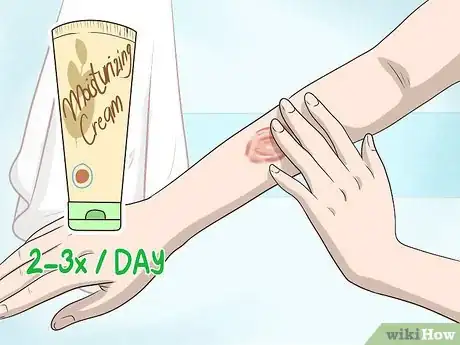



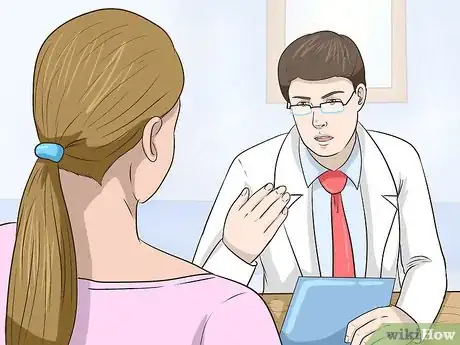
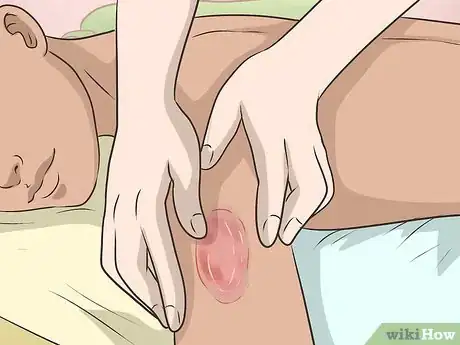

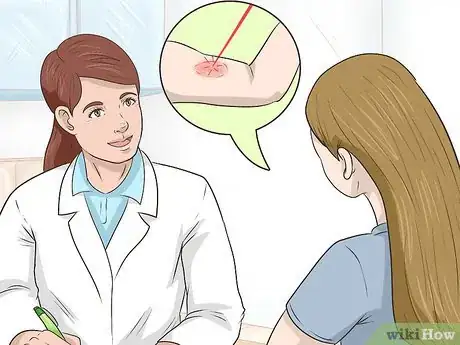
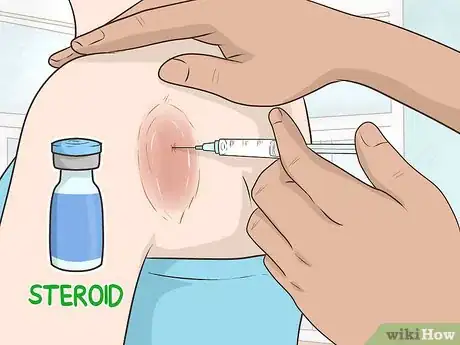
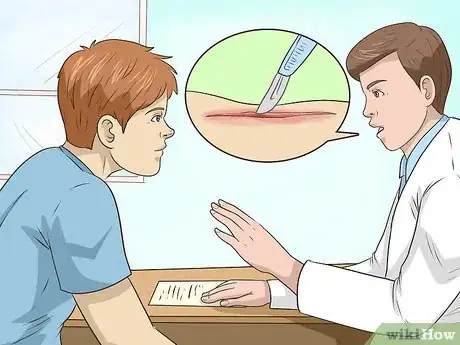

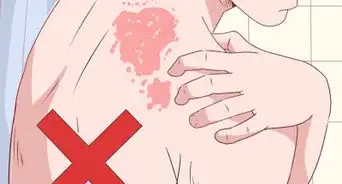






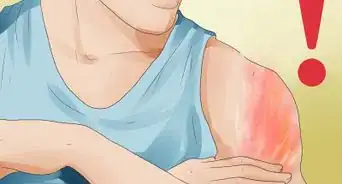
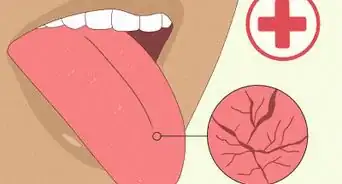

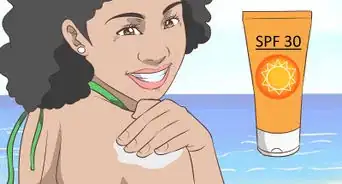

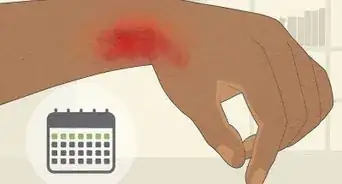
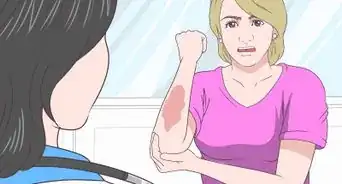







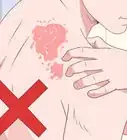

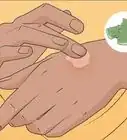




































Medical Disclaimer
The content of this article is not intended to be a substitute for professional medical advice, examination, diagnosis, or treatment. You should always contact your doctor or other qualified healthcare professional before starting, changing, or stopping any kind of health treatment.
Read More...